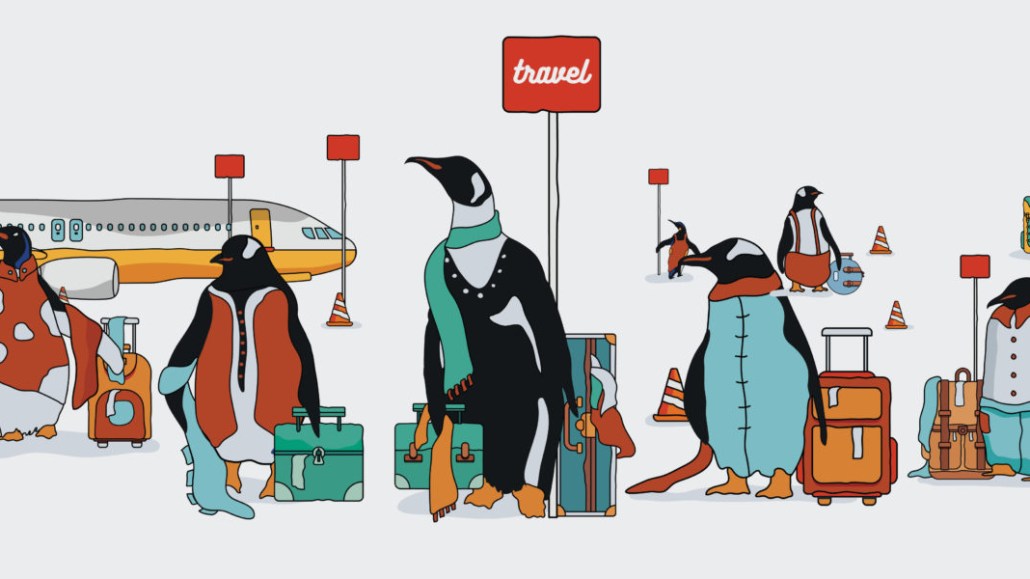Save 50% on a 3-month Digiday+ membership. Ends Dec 5.
Atlas Obscura thinks local with creative print campaigns to keep ad revenue flowing amid travel spike

Atlas Obscura CEO Warren Webster is not so worried about the impact of an economic slowdown on his company’s advertising business, given more than half of its clients are in the travel category. But the travel publisher is starting to rethink branded partnerships with its local tourism bureau clients as the recent travel spike has many cities and states hoping to attract visitors.
- Stands for “destination management organization”
- Includes local tourism bureaus
- Used to measure success through distribution of paper maps, guidebooks, pamphlets, etc., and now measure page views and downloads
- Where Atlas Obscura saw potential: Turning old-school paper products into collectibles and keepsakes for marketing campaigns
“We’ve been keeping an ear to the ground about the second half of this year and going into 2023 as economic news is sort of uncertain. [But] travel has just remained really strong. Advertising in our world has remained really strong, and we don’t see it diminishing,” said Webster.
Distribution of maps, guidebooks and pamphlets used to be the way tourism bureaus — also known as destination management organization (or DMOs) — measured their success. But now, because a lot of those assets live online and are measured with page views and downloads, Atlas Obscura is helping to realize a new purpose for those physical paper products: collectible map posters and 130-page visitor’s guide keepsakes.
“[The Los Angeles tourism bureau] came to us and basically said, ‘What would it look like if we did this together and tried to make it something that was a little more editorial…something that was really going to have a lot of value,’ because sometimes they end up being kind of throwaway objects,” said Dylan Thuras, co-founder of Atlas Obscura.
Atlas Obscura is no stranger to creating city guides and itineraries for its own audience, so Thuras said they treated this campaign like an editorial project and created several guides and maps (with the parameter of viewing everything in the guide through a positive lens). The editorial team was not involved, but there was some overlap between the editorial city guide found on Atlas Obscura’s site and the guide produced for the DMO, as the branded partnership team pulled from the company’s own database of L.A. hot spots, restaurants and activities.
This deal ended up costing the L.A. DMO about $1 million, though the bulk of that went to the cost of printing, Thuras said. He did not disclose how much Atlas Obscura kept post-printing costs. It took nine months from ideation to actually printing the maps and guides, which ended up totaling over 200,000 official visitors maps, 65,000 official visitors guides, 4,300 meeting planner guides and about 2,600 L.A. luxury guides, according to the company. All of them are being distributed by the DMO in its visitor centers.
Ad position: web_incontent_pos1
“We’ve really become a marketing shop for DMOs,” Webster said, adding that beyond printing, Atlas Obscura has been creating videos, digital assets and other more traditional media campaigns for this category of advertisers for several years now.
As a result, DMOs and travel clients represent more than half of Atlas Obscura’s brand partnership revenue, which is expected to bring in $14 million for the company in 2022 — up $4 million from initial predictions of $10 million at the start of the year, Webster said. Total revenue for the company is pacing to be $22 million, almost triple the company’s revenue in 2021.
This isn’t overly surprising, given travel is such a core part of Atlas Obscura’s advertising business, and given that the travel industry is just now recovering from the pandemic’s impacts in 2020 and 2021. According to MediaRadar, the amount spent on advertising in the travel category is up 82% in the first six months of 2022 compared to the same period last year. And within that category, local tourism bureaus in the United States are up 19% in the amount of money spent on advertising in 2022 versus 2021, totaling more than $282 million year-to-date. DMOs in California, specifically, increased their spend by 22% year over year to $35 million.
Atlas Obscura hopes to get its other DMO clients to buy similar campaigns to the first-of-its-kind one executed with Los Angeles.
Ad position: web_incontent_pos2
According to Kelli Hashimoto, a media buyer at Media Two Interactive who works with Charlottesville, Virginia’s DMO, creative campaigns are seen as a necessity as Visit Charlottesville looks for ways to convince tourists to book their vacations during weekdays and in the off-seasons of fall and winter, since peak summer weekends have reached capacity at local hotels.
A lot of those creative campaigns will be budget-dependent, however, since Visit Charlottesville primarily produces its print materials in-house, and Hashimoto said her client’s budget is based on the previous year. Therefore, many of these more involved campaigns will be part of their 2023 budget, which is expected to be higher if this year’s no-vacancies trend is any indication of success.
More in Media

Digiday+ Research Subscription Index 2025: Subscription strategies from Bloomberg, The New York Times, Vox and others
Digiday’s third annual Subscription Index examines and measures publishers’ subscription strategies to identify common approaches and key tactics among Bloomberg, The New York Times, Vox and others.

From lawsuits to lobbying: How publishers are fighting AI
We may be closing out 2025, but publishers aren’t retreating from the battle of AI search — some are escalating it, and they expect the fight to stretch deep into 2026.

Media Briefing: Publishers turn to vertical video to compete with creators and grow ad revenue in 2026
Publishers add vertical video feeds to their sites to boost engagement, attract video ad spend and compete with news creators.
Ad position: web_bfu



